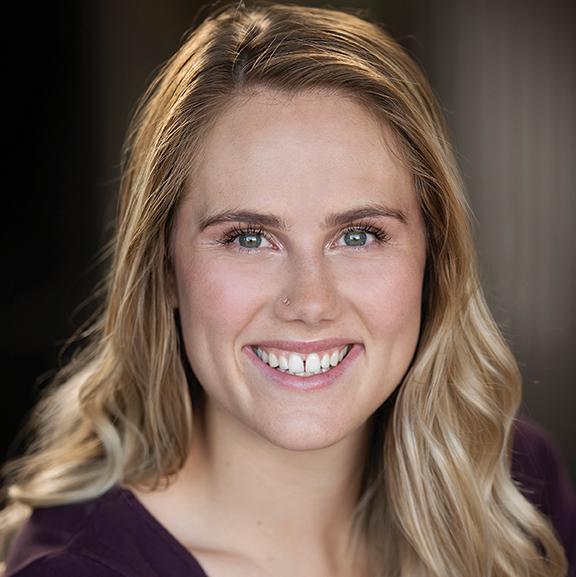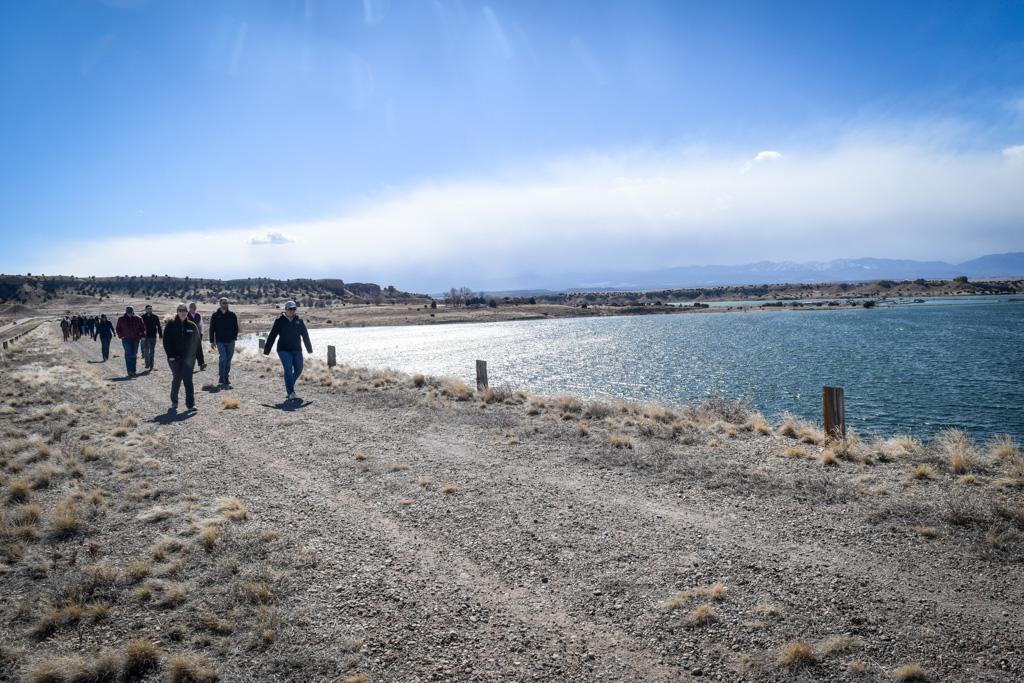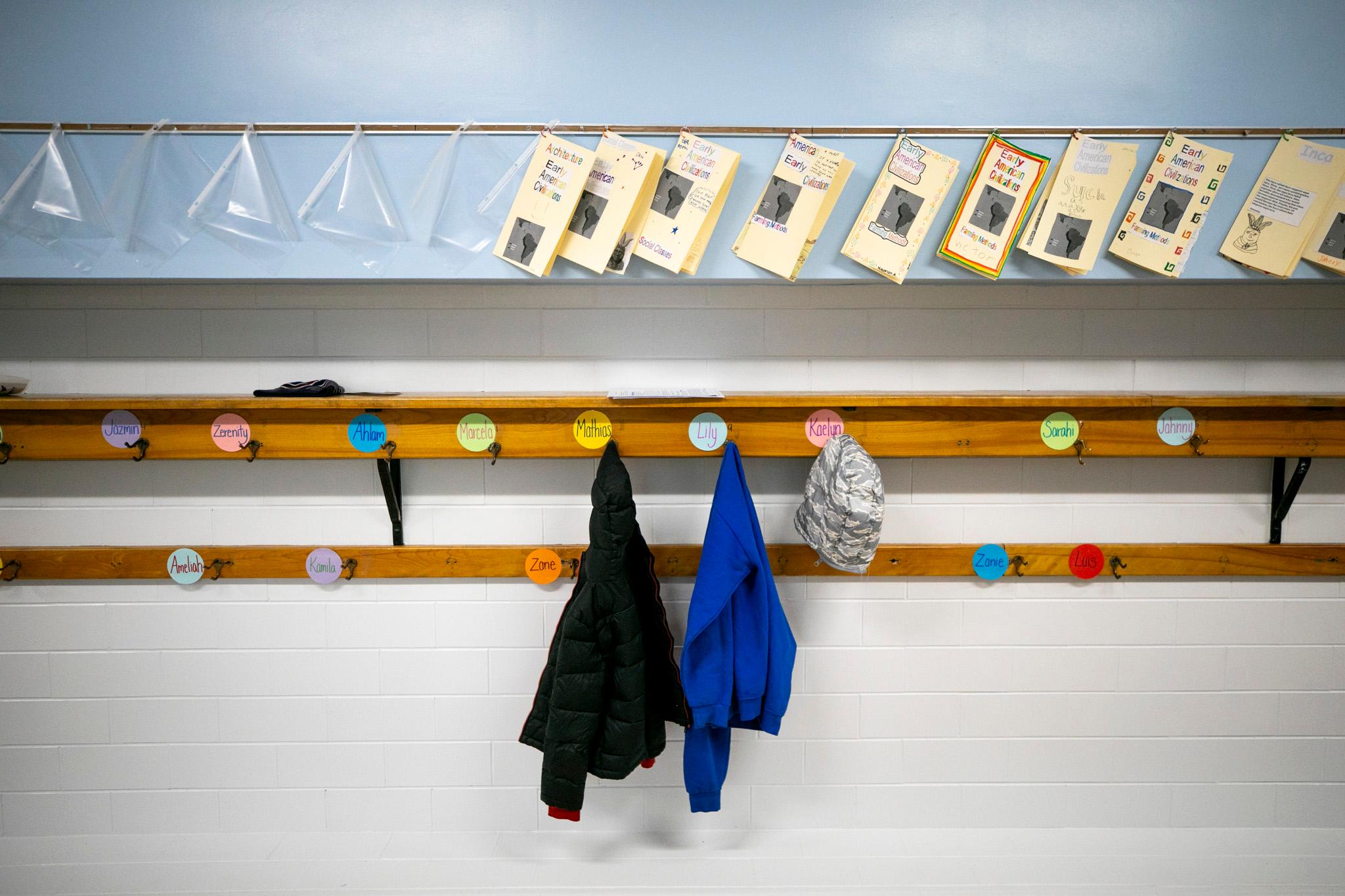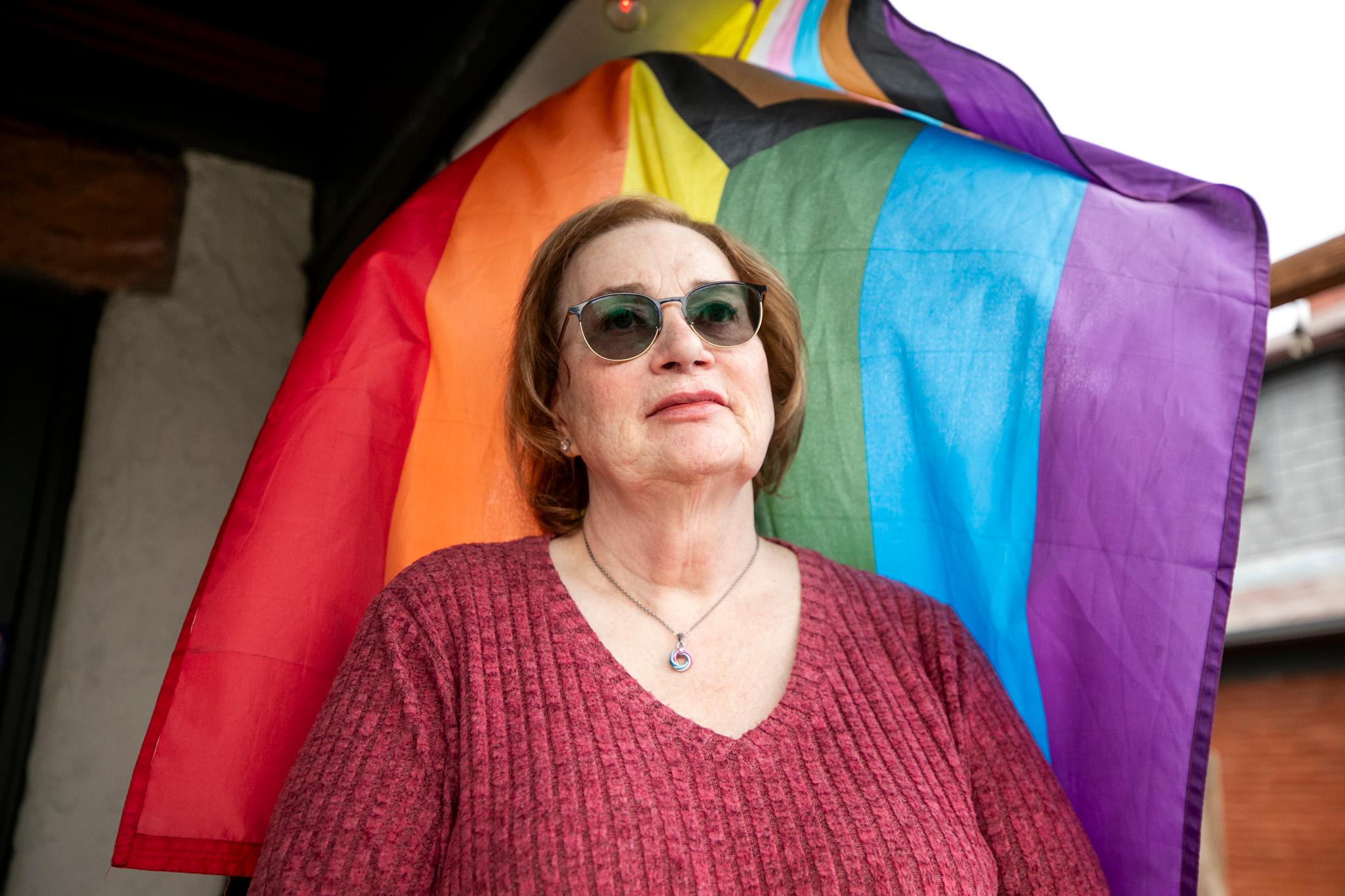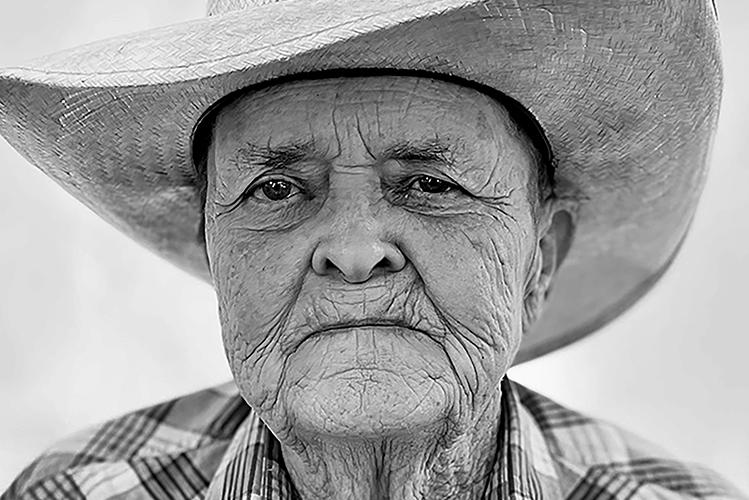
Around 1979, Dr. Nancey Johnson Bookstein was outed by a fellow faculty member on the quad of the CU School of Medicine. The woman asked her “Well, how’s it like to be gay?”
“We weren’t alone, and I hadn’t told her. And I was mortified. And I was actually afraid of losing my job,” Johnson Bookstein said at the opening reception of Eye to Eye: Portraits of Pride, Strength, Beauty at the same school where she went on to work as an associate professor of physical therapy for 38 years.
She and others spoke of the many ways they and others in the LGBTQ+ community were stigmatized and ostracized. They were separated from their partners at the emergency room in the middle of a crisis, asked humiliating questions and often had to hide their identities to keep their jobs and reputations.
Carey Candrian, an associate professor at the CU School of Medicine, is the mind behind the portrait series. She studies how communication shapes — and is shaped by — perception, attitudes and biases in the LGBTQ+ community. She’s interviewed dozens of older adults from the community about their experiences with palliative care, hospital visits and living in assisted living or skilled nursing facilities.
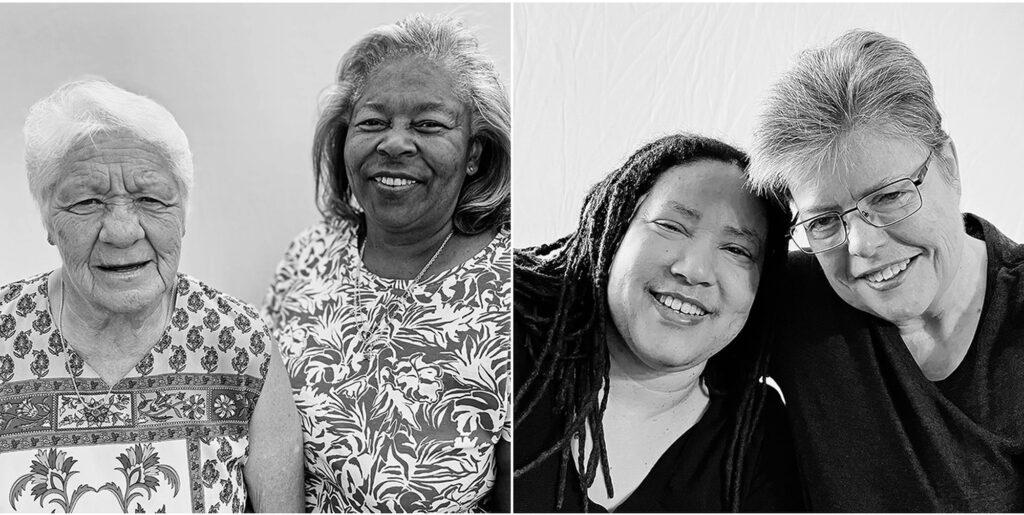
One goal of her research is to improve the care at facilities and educate staff on how to create an inclusive environment for LGBTQ+ residents. Once, when she was presenting some of her work at an assisted living facility, she was asked questions from the crowd that shocked her.
“One of the first comments was someone asked me: Will there be less gay people now that we're eating more organic? So we have less hormones,” she said at the opening reception. “And another comment was, you know, if we allow LGBT residents to come in, will they all have HIV?”
There was a lot to unpack in each question, but what occurred to her was how little the people asking knew about LGBTQ+ people. She guessed that they probably didn’t know anyone, or didn’t think they knew someone, who was LGBTQ+.
It’s one thing to publish academic articles, speak at conferences for medical professionals or to lecture students, Candrian explained, and it’s another to use art to convey the humanity of the people behind the research.
Candrian decided to photograph 27 of the older LGBTQ+ women she’s interviewed over the last five years and then display those photos with quotes describing some of their thoughts and experiences.
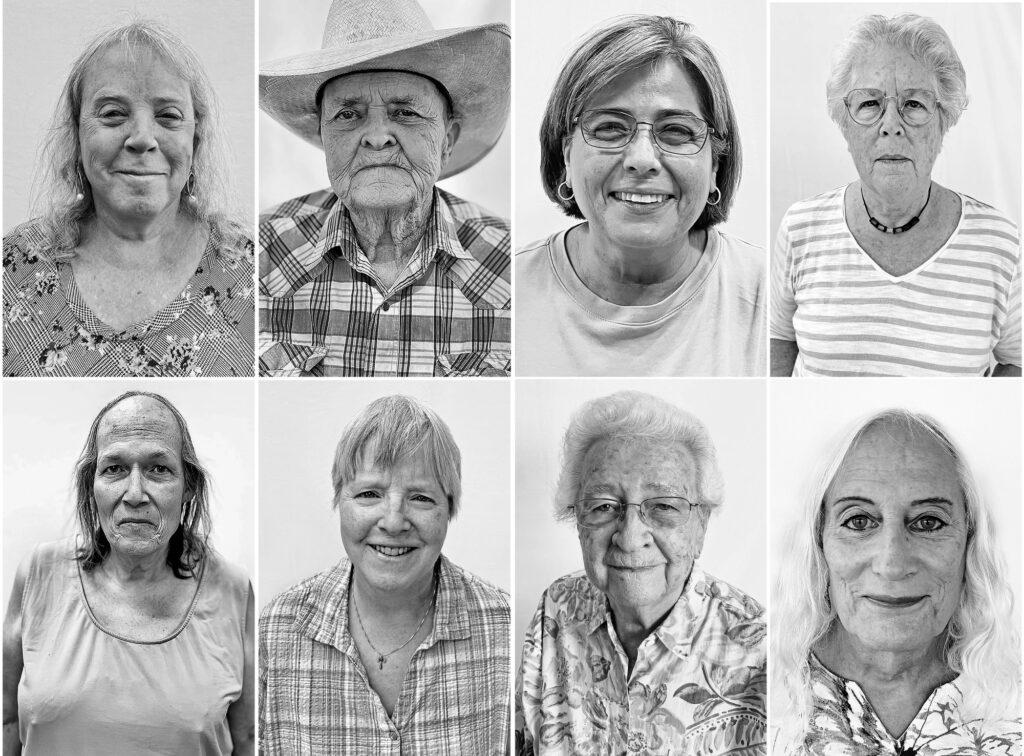
"They’ve been whispered about, shouted at, insulted, rejected, isolated. But here they are, strong and brave. Look into their eyes," the exhibit's description reads.
Johnson Bookstein is photographed alongside her wife, Joan, with the quote: “Our life wish is that there would be retirement communities for us (LGBT people). We don’t want to die with a bag over our heads.”
Many seniors go back in the closet when they enter assisted living facilities. During the Q&A portion of the opening event, people in the crowd brought up similar concerns. Estelle, who was photographed for the event, said she hasn’t told anyone she’s gay at the facility she lives at. She shrugged about it and said she has lots of girlfriends who visit, but she also has kids and grandkids.Other residents and staff haven’t thought to ask about it.
The black and white portraits are up close and personal. They’re at eye level and show a careful attention to detail. Some are smiling, others look serious or contemplative.
“I sure have a lot of wrinkles,” laughed Jude Gassaway who wore a cowboy hat and leather vest to the opening reception. “She was careful to get that kind of topography.”
Gassaway is “the block lesbian over on Harlem street” in Edgewater, as she describes herself. She’s 81-years-old and came out when she was 40. Under her photograph reads: “I denied myself for 40 years. The next 40 years I became who I am and now I have a life to live.”
For Agnes Callwood, who wore black leather boots with eagles and has purple hair, the portrait series presented her an opportunity to come out to the people she works with. She wasn’t in the closet, per se, she said, she just didn’t explicitly tell anyone. She’s been a nurse for more than 20 years.
“There's a thing about being forthright and a thing about being passive — and so I've been passive. Maybe I don't need to be passive. Maybe there are other people out there that are passive that want to be forthright,” Callwood said. “Somebody needs to lead the way, maybe that might be me.”
The exhibit will run through January, but may run longer. Candrian is hopeful it will travel.
“I think that the LGBT community, like most marginalized communities they're always talked about from a deficit. So you hear all of these horrific statistics and it’s easy to lose the person,” Candrian said “I do think when you see someone and hear their story, it does make you think differently and doesn't make it as easy to look away. And that was one of the things I hope people would do with this exhibit is have it stay with them.”
Due to COVID-19 precautions, the exhibit is not yet open to the public. The portraits can be viewed online. Badged students, faculty members and staff can visit the exhibit.
